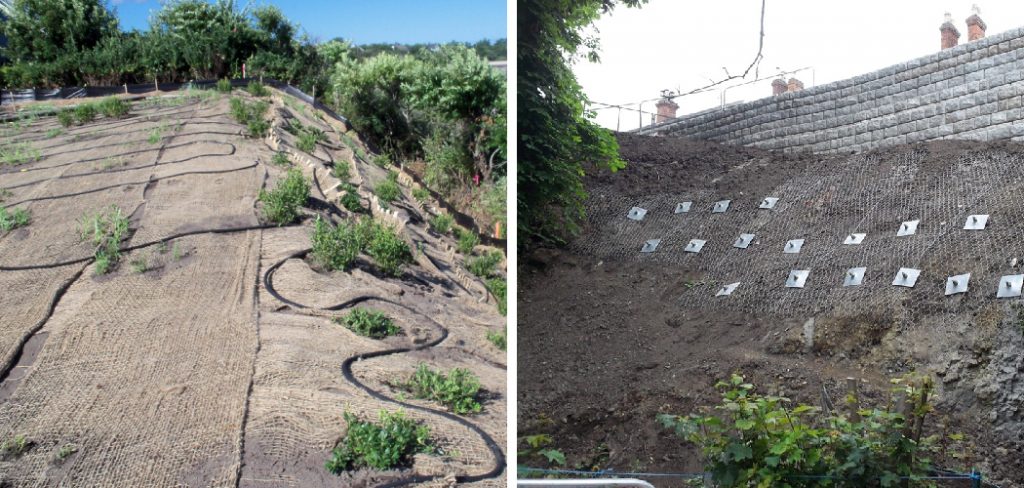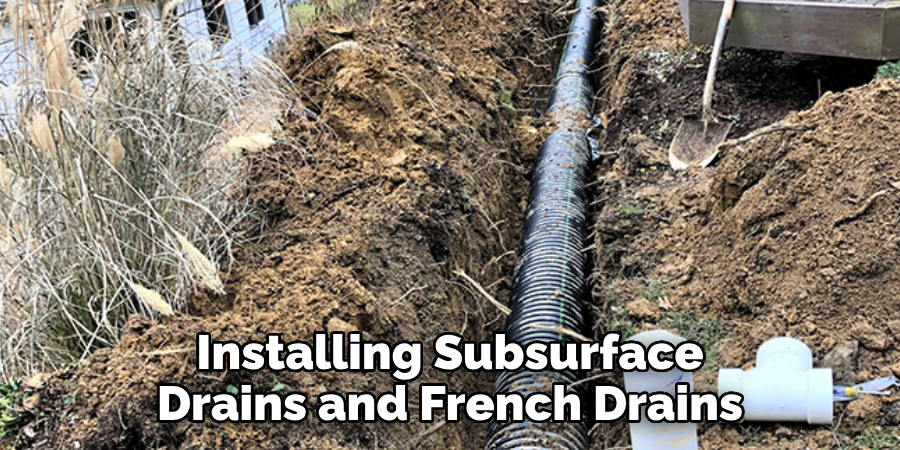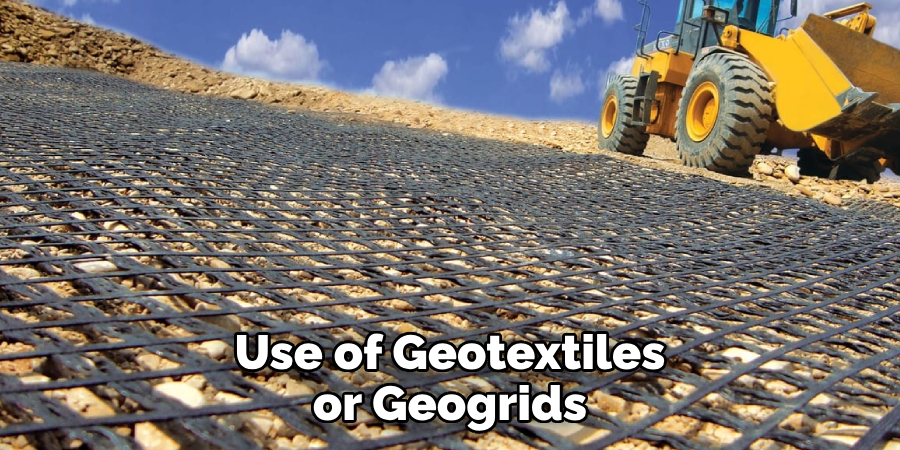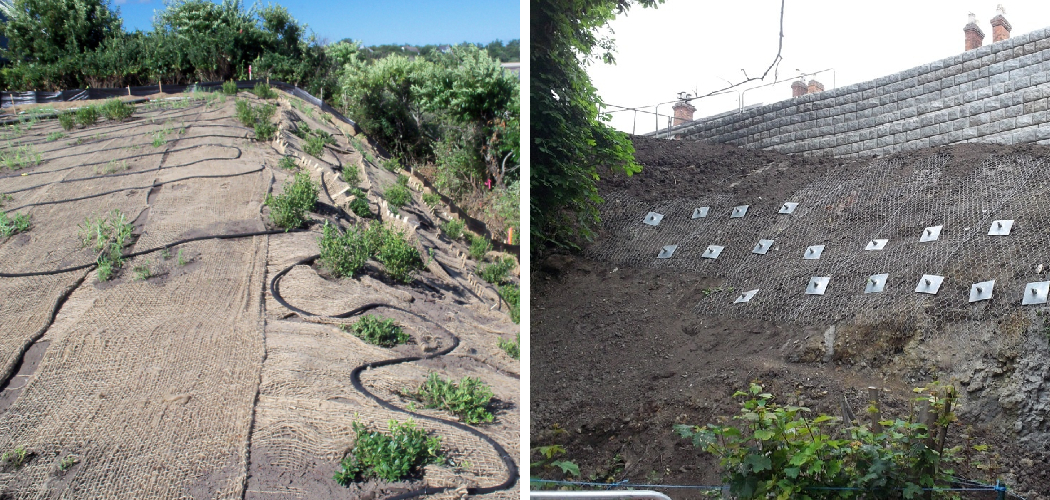To stabilize soil on a slope, you can use techniques such as terracing, planting vegetation, installing retaining walls, and implementing erosion control measures. These methods help prevent soil erosion, retain moisture, and create a stable environment for plants to grow.
By carefully planning and implementing these strategies, you can effectively stabilize soil on slopes and maintain their structural integrity. Implementing these techniques will not only prevent erosion but also enhance the overall stability and aesthetics of the slope. With a well-designed approach, you can create a sustainable and long-lasting solution to stabilize soil on slopes.

Understanding Soil Erosion
Soil erosion on slopes can have detrimental effects on the stability of the land. Understanding the factors that contribute to soil erosion is crucial in finding effective solutions. Rainfall intensity, slope gradient, soil type, and vegetation cover all play a role in the erosion process.
Excessive rainfall can lead to increased runoff, causing the soil to detach and erode. Steeper slopes are more susceptible to erosion due to the force of gravity. Different soil types have varying levels of resistance to erosion. Vegetation cover, including grasses, shrubs, and trees, helps to stabilize the soil by absorbing the impact of rain, reducing runoff, and binding the soil particles together.
By implementing techniques such as terracing, contour plowing, and mulching, the effects of soil erosion on slopes can be minimized. Taking proactive measures to stabilize soil on slopes is essential for environmental conservation and preventing potential hazards.
How to Stabilize Soil on a Slope: Step by Step Guide
Choosing The Right Stabilization Methods
Choosing the right stabilization methods is crucial when it comes to stabilizing soil on a slope. To begin, assess the slope’s characteristics to determine the most suitable approach. One important step is soil testing for stability to understand its composition and potential risks.
By analyzing factors such as moisture content and soil type, you can identify the appropriate measures to implement. It is essential to follow these steps to ensure a successful stabilization process, minimizing the chances of erosion and slope failure. Selecting the right method and performing adequate soil testing are vital for achieving a stable slope, preventing any potential damage or accidents in the future.
By considering these factors, you can effectively stabilize soil on a slope and maintain its integrity in the long run.
Reinforcing The Soil
Stabilizing soil on a slope is crucial to prevent erosion and ensure the stability of the landscape. Reinforcing the soil can be achieved through various techniques. One effective method is utilizing retaining walls, which provide support and prevent the soil from sliding.
Additionally, terracing can be employed to create multiple levels on the slope, reducing the overall angle and minimizing the chances of erosion. Furthermore, installing geosynthetic materials, such as geotextiles, geogrids, and geocells, can enhance the stability of the soil by providing additional strength and preventing soil movement.
These materials are designed to resist erosion and distribute the forces exerted by gravity evenly. By implementing these techniques and utilizing high-quality materials, soil stabilization on slopes can be effectively achieved, ensuring safety and preserving the aesthetics of the landscape without compromising its stability.
Vegetation For Slope Stabilization
Soil stabilization on a slope can be effectively achieved by using vegetation as a natural solution. When selecting plant species for slope stabilization, it is important to choose those that have deep and extensive root systems. These plants help to bind the soil together and prevent erosion.
Additionally, they can absorb excess water and nutrients, reducing the risk of landslides and soil erosion. Implementing erosion control blankets is another method to stabilize soil on a slope. These blankets act as a physical barrier, protecting the soil from erosion caused by wind and water.
They also help to retain moisture in the soil, promoting the growth of vegetation. By combining the appropriate plant species with erosion control blankets, you can effectively stabilize soil on a slope and prevent erosion.
Proper Drainage Systems
Proper drainage systems are crucial for stabilizing soil on a slope. One effective method is installing subsurface drains and french drains. These drainage systems help to prevent the build-up of excess water, which can erode the soil and cause instability.
Without proper drainage, water can accumulate and weaken the slope, increasing the risk of landslides and soil erosion. Subsurface drains are placed beneath the surface to collect and divert water away from the slope, reducing the pressure on the soil.

French drains, on the other hand, consist of a trench filled with gravel and a perforated pipe, allowing water to flow away from the slope. By ensuring proper drainage, you can significantly improve the stability and longevity of a slope, safeguarding your property and the surrounding environment.
Managing Water Runoff
When managing water runoff on a slope, one effective technique is diverting water away from the slope. One way to do this is by constructing erosion control swales. These swales act as channels that divert water, preventing it from directly flowing down the slope and causing erosion.
By strategically designing and positioning swales, you can control the path of water runoff, directing it towards appropriate drainage areas. This helps to stabilize the soil on the slope by reducing the amount of water that flows directly over it.
Properly constructed swales can also help prevent the formation of gullies and rills, which further contribute to soil erosion. Implementing this water diversion technique is an important step in effectively managing water runoff and stabilizing soil on a slope.
Soil Erosion Prevention Measures
Soil erosion on slopes can be effectively prevented by implementing various measures. One such technique is the use of erosion control mats. These mats provide stability to the soil by preventing it from being washed away by water or eroded by wind.
They are typically made of natural fibers or synthetic materials and are placed over the slope surface. Mulching is another effective method for slope stabilization. Mulch helps in retaining moisture in the soil, reducing erosion caused by rainfall. You can use organic mulch, such as straw or wood chips, or inorganic mulch, like gravel or stone.
Both options provide protective cover to the soil and help prevent erosion. By incorporating these techniques, you can effectively stabilize soil on slopes and prevent soil erosion.
Regular Maintenance Practices
Regular maintenance practices are essential for stabilizing soil on a slope. Inspecting and repairing erosion control measures is a crucial step in this process. By regularly monitoring moisture levels and plant health, you can identify any issues and take necessary actions.
This helps to prevent erosion and maintain the stability of the slope. Additionally, it is important to address any drainage problems and ensure proper water flow. Implementing erosion control mechanisms such as installing retaining walls or terracing can also be beneficial.
Regularly inspecting and maintaining these measures will help prevent soil erosion and ensure the stability of the slope over time. By following these practices, you can effectively stabilize soil on a slope and protect the surrounding environment.
Frequently Asked Questions For How To Stabilize Soil On A Slope
What Is Soil Stabilization On A Slope?
Soil stabilization on a slope refers to techniques used to reinforce and strengthen the soil to prevent erosion or landslides. It involves measures like adding vegetation, installing retaining walls, or using geosynthetic materials to improve soil stability.
Why Is Soil Stabilization Important On Slopes?
Soil stabilization is crucial on slopes to prevent soil erosion and landslides which can pose a threat to infrastructure and people’s safety. It helps to maintain the integrity of the slope, reduce soil erosion, and provide stability for construction projects or vegetation growth.
What Are Some Common Soil Stabilization Methods For Slopes?
Common soil stabilization techniques for slopes include the use of geotextiles or geogrids, retaining walls, slope terracing, soil nail walls, and bioengineering methods like vegetation planting. These methods help to stabilize the soil, prevent erosion, and maintain slope integrity.

How Can Vegetation Help Stabilize Soil On Slopes?
Vegetation plays a vital role in stabilizing soil on slopes. The roots of plants help bind the soil particles together, creating a network of stability. They also act as a barrier against erosion by reducing the impact of rainfall, improving water absorption, and preventing excessive surface runoff.
When Is It Necessary To Consult A Professional For Soil Stabilization?
It is advisable to consult a professional for soil stabilization on slopes when dealing with significant or complex projects, extensive slope erosion, or highly unstable soil conditions. Professionals can assess the situation, provide expert advice, and recommend suitable stabilization methods for long-term effectiveness and safety.
Can Soil Stabilization Methods Also Enhance The Aesthetic Value Of Slopes?
Yes, soil stabilization methods can enhance the aesthetic value of slopes. Techniques like bioengineering, which involve planting vegetation, not only stabilize the soil but also add beauty to the landscape. Additionally, retaining walls can be designed with appealing materials and patterns to complement the surrounding environment.
Conclusion
Stabilizing soil on a slope is crucial for preventing erosion and maintaining the structural integrity of the land. By following the recommended methods and techniques, you can effectively stabilize the soil and create a more stable and safe environment. Start by identifying the factors contributing to soil erosion, such as water flow and vegetation, and implement strategies to address them.
Consider using erosion control blankets and geotextiles to provide continuous protection. Additionally, utilizing terracing techniques, such as constructing retaining walls or installing erosion control mats, can help to stabilize the soil and prevent further erosion. It is important to regularly monitor and maintain the stabilized soil, ensuring that any issues are promptly addressed.
With proper stabilization techniques and regular upkeep, you can create a sustainable and stable slope that will withstand the test of time.

